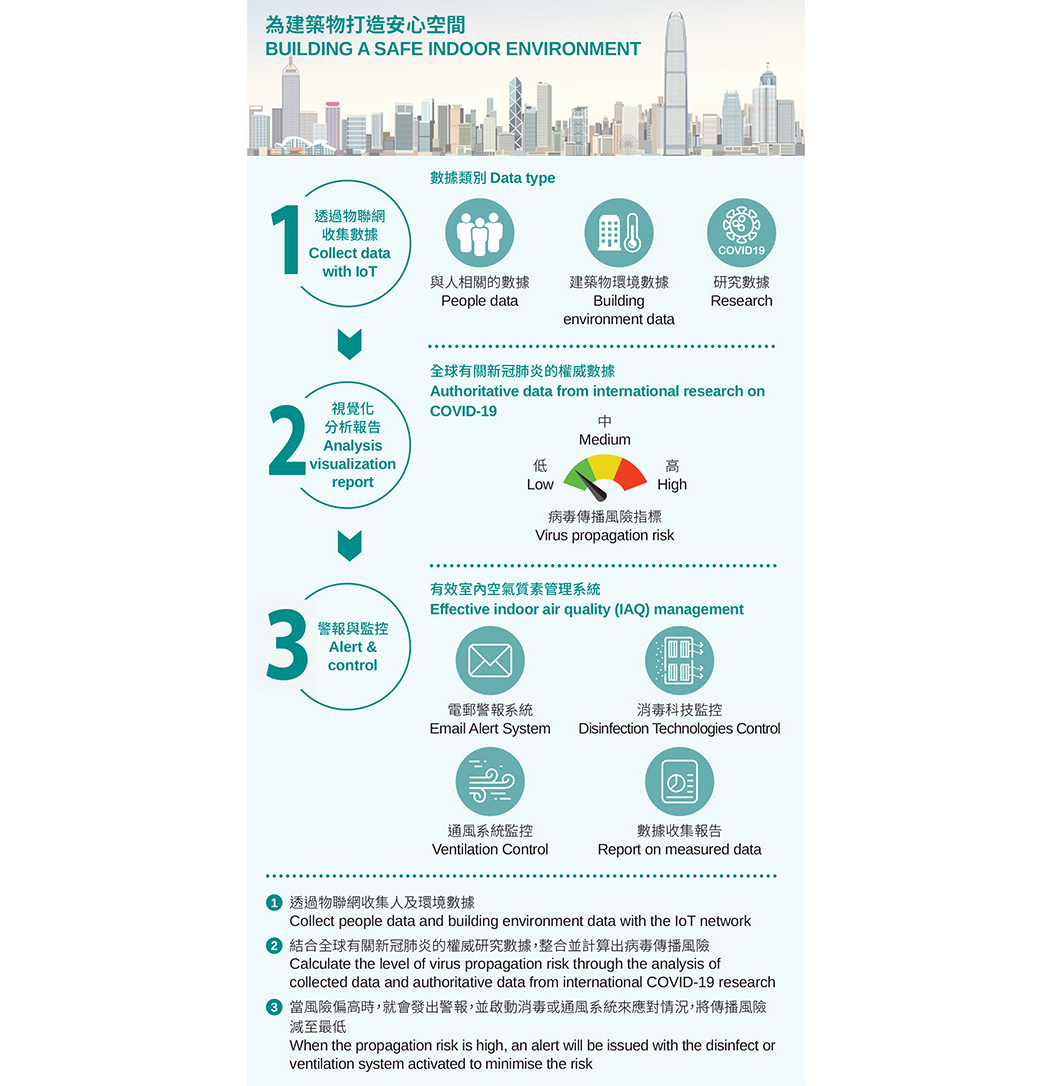12 August 2021
For the new generation of buildings, it’s not only the architecture that matters. A shift towards buildings that also place focus on energy efficiency means increasingly sustainable design. Among the innovations that have become hugely popular in real estate is AIoT technology, which transforms properties into smart, sustainable buildings with an intelligent management platform that combines artificial intelligence (AI) technologies with Internet of things (IoT) infrastructure, cloud computing and big data computing, so enhancing environmental, social, and corporate governance (ESG) performance.

AIoT technology, a combination of artificial intelligence technologies, internet of things infrastructure, cloud computing and big data computing, is employed in Negawatt Utility’s building management system to minimise human error and boost efficiency for centralised management.
Arthur Lam, Co-CEO of Negawatt Utility, explains the trend: “Take the office air-conditioning system as an example,” he says. “The AIoT system makes a comfortable room temperature possible without sacrificing energy efficiency. What’s more, you don’t have to spend millions of dollars on additional hardware. Give us one or two days and the installation will be done.” Negawatt’s AI-powered Building Operating System (BOS) connects to energy sensors in the building to track energy consumption and monitor environmental parameters, both indoor and outdoor. The data collected is stored in a cloud database for machine learning and big data analytics that create energy-efficient solutions. At present, there are more than 100 buildings supported by Negawatt’s BOS.
“For Chinachem Group’s Nina Tower, energy consumption dropped by 10% in less than two months after the system was up and running,” notes Lam, whose company has been working with Chinachem Group since 2019. The collaboration between the two is built on the shared belief of a people-oriented approach. “AI will not replace humans, but will assist the team in managing their buildings more effectively,” Lam believes. “We hold meetings with the front-line management team every month to understand their pain points. In turn we optimise the system in the hope of bringing them a tool that they truly find helpful.”
In future, Negawatt will further enhance its technology, alongside digital solutions for COVID-19 control. The risk of indoor airborne transmission of COVID-19, referencing reports from internationally-acclaimed research institutions, will be digitised to facilitate assessment and assist the front-line team in taking preventive measures. It will be a system that serves a dual purpose – energy-saving and pandemic prevention – thereby creating a sustainable, comfortable and safe public space for all in the new normal.
“For Chinachem Group’s Nina Tower, energy consumption dropped by 10% in less than two months after the system was up and running,” notes Lam, whose company has been working with Chinachem Group since 2019. The collaboration between the two is built on the shared belief of a people-oriented approach. “AI will not replace humans, but will assist the team in managing their buildings more effectively,” Lam believes. “We hold meetings with the front-line management team every month to understand their pain points. In turn we optimise the system in the hope of bringing them a tool that they truly find helpful.”
In future, Negawatt will further enhance its technology, alongside digital solutions for COVID-19 control. The risk of indoor airborne transmission of COVID-19, referencing reports from internationally-acclaimed research institutions, will be digitised to facilitate assessment and assist the front-line team in taking preventive measures. It will be a system that serves a dual purpose – energy-saving and pandemic prevention – thereby creating a sustainable, comfortable and safe public space for all in the new normal.
